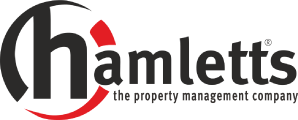London is an excellent city, with enough activities to keep you busy for however long you wish to stay. In this busy metropolis, using local transport can be confusing if you don’t know the efficient way of using it. For work or university/college, you have to travel on a regular basis. London is a city with an absolutely fantastic public transport network. However, the plethora of choice can be a bit overwhelming for the first time visitor. In this article, we will share with you our guide for how to get around London and how exactly each form of public transport in London works.
London is divided into nine fare zones. Zones 1 & 2 being central London, and then increasing in number the further outside the city you get. We will cover all the zones in below transport options. TfL(Transport for London) is a government body that operates the transport in London. There are a number of ways to pay for transport inside London. You can buy an individual ticket, use a contactless card or a travel card and get an Oystar card(this is most cost effective) etc.
The London Underground also known as “Tube”, is the oldest underground metro network in the world. In the majority of London, you will usually find that there is an underground stop within easy walking distance, and a train arriving within 10 minutes or less. It is the best way to get around because there is no traffic in underground. You can easily recognise tube stations with the distinctive London Underground logo. A red circle with the text “Underground” featured in a blue box. It operates in zones 1 – 6, the more zones you cross the more expensive it will be.
The Overground is similar to the Underground, except obviously it’s above ground. The Overground is a lot newer than the Underground though, created in 2007, and helps to fill in a number of coverage gaps that the Underground has. In terms of pricing, the Overground has the same fare pricing as Underground, and follows the same zone-based rules.
The Docklands Light Railway, also commonly known as DLR, is an automated rail system. It specifically covers the docklands area of London. The area is directly in the east and south east of central London. DLR is fully automated, which means no drivers. The DLR links London City Airport to the rest of the tube network, and you should use it if you are taking trips around east and south east London. In terms of fares, the DLR is the same as the Overground and Underground.
Bus is the most used form of public transport in London. There are just so many bus routes in London, serving a huge area – one can basically get anywhere in London by bus. Bus fares are also cheaper, it also has a fixed price of a single journey for Oyester users regardless of distance. Buses are generally a little slower than rail services because of the traffic, which in London is pretty terrible most of the time. However, an advantage is that normally there are no steps involved and no lengthy walks around the Underground system.
Tram is a public transport in south London with four lines and 17 miles of track. This definitely isn’t a huge network, but it’s a well used one in this region. The tram works the same as the bus in terms of payment – it’s a fixed fee per journey.
River Boat in Thames river is also used as a public transport system. Thames Clippers operating a service under license from TfL. There are four “routes”, starting all the way to the west of the city and going far in the east. Essentially this gets you from one end of London to the other.
Taxis in London- the iconic black cab has a long history and is without a doubt one of the famous forms of transport. Taking a black cab in London is definitely an experience. All you have to do is flag one down by waving at them (the taxi light will be illuminated if it is available), and the driver will stop to pick you up. Black taxis are certainly more expensive than any of the other forms of transport regulated by TfL, but if you’re travelling in a group they can work out to be fairly cost effective. Fares need to be paid by cash or credit card as taxis don’t accept Oyster cards.
The Bicycle, most commonly known as Boris bike, is a relatively new public transport option. There are public cycle points all around the city, and with the increase in cycle lanes, these are becoming a popular way to take short trips. Hiring a bicycle is relatively easy and cost effective. To use the cycle hire system you just need a credit or debit card. Because of the need to guard against theft, the system doesn’t accept Oyster cards.
If you’re getting around the majority of central London, the Underground will likely be the most convenient. Bus is the next most convenient option for parts of London that aren’t served by the Underground, DLR or Overground services. There are services all over the city, often running through the night. We hope this guide you serve well in terms of choosing the best transport for you as well your family. Enjoy life in London and stay connected with Hamletts Blog for more interesting topics.



